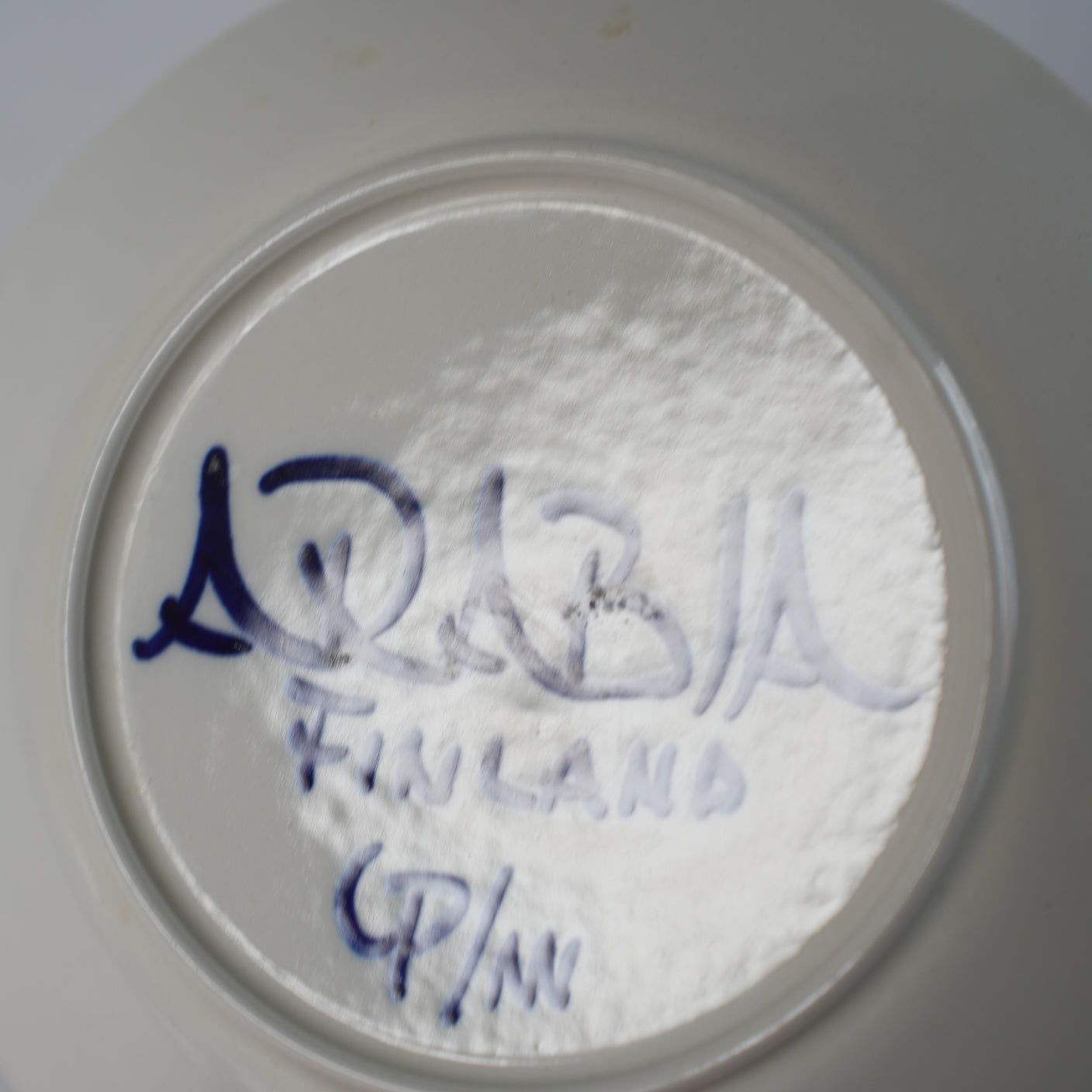ARABIA
Rare Arabia (ARABIA) Samba (Samba) cup and saucer
Rare Arabia (ARABIA) Samba (Samba) cup and saucer
Couldn't load pickup availability
|
■Details |
| Manufacturer: ARABIA |
| Form design: Kaj Franck |
| Pattern design: Ulla Procope |
| Country of Origin: Finland |
| Era: 1960s |
|
Condition: ★★★★☆ (4: Excellent condition) The saucer shows slight scratches when held up to the light. The cup shows slight scratches from storage, but is in near-unused condition. Both the cup and saucer are in excellent condition, with no cracks, chips or crazing, remaining exactly as they were when they were made. |
| ■Size |
|
Cup diameter 8.7cm Height 6cm Saucer diameter 14.5cm |
This is the legendary cup "Samba" produced in the 1960s by ARABIA, a leading Finnish pottery manufacturer. It was designed around 1960, but was hardly produced at all, so it is a rare cup with very few remaining today. It is an exceptionally rare collector's item among Arabia tableware.
The series name Samba is a Brazilian dance. The saucer has the same pattern as Samba's sister model, Fiesta. It is a smaller coffee cup size than Fiesta, and the cobalt blue floral pattern painted with dancing brushstrokes is a very impressive piece.
The design was done by Kai Franck, a master who promoted the modernization of Finnish design. The shape is called the BA model, and is the same as the classic Teema, which is still in production today.
Ulla Procoppe, who was in charge of the pattern design, is the creator of the masterpieces Valencia and Fiesta. In this Samba series, as with Valencia, she designed the tableware in a single color using only cobalt blue. Although the name is a passionate Latin-speaking name, the interesting thing about the piece is that it is decorated in deep cobalt blue instead of red or yellow.
This work was probably designed between 1959 and 1962. Since the Valencia, also decorated in cobalt blue, was made in 1961, and its sister model, the Fiesta, was made in 1960, this work is likely to have been designed in the years around those years.
It is unclear why so few Sambas were produced, but among ARABIA's hand-painted cups, the Samba is the smallest. Most of the small ARABIA cups from that time were decorated with transfer paper or copperplate transfer, and the technique of hand-painting small cups was not common. Hand-painted works from that time were limited to large cups and plates that were at least 20 cm in diameter and easy to handle. For these reasons, the small Samba was difficult to mass-produce, and it was not incorporated into the production system.
This is why the Samba is by far the rarest piece among Arabia's works produced in the 1960s. Don't miss this opportunity to see it.
























Kaj Franck

Kaj Franck ( 1911-1989 )
A famous designer from Finland, he promoted the modernization of tableware through the design of daily necessities, and had a great influence on the Nordic lifestyle.
In 1932, he studied furniture design at the Helsinki University of Arts and Crafts, and after graduating he worked in interior design, window displays, textiles, and glass design. In 1945, he became a designer for ARABIA, and achieved international success with the ``Kilta'' tableware series, which he had been developing since the 1940s.
In 1946, he won a glass design competition and became a designer for Iittala. From 1950, he was involved in glass design at Nuutajärvi, and his 1955 tumbler 2744 was selected for the collection of the Museum of Modern Art (MOMA) in New York. The design is known for its simplicity and functionality, and has become a symbol of Finnish design.
Ulla Procope

Ulla Procope (1921-1968)
Born in Helsinki. In 1948 , he graduated from the Faculty of Art and Design at Aalto University in Helsinki and joined Arabia Company. After that, he was in charge of design in the production department for 20 years, creating the Ruska series in 1960 and the Valencia series in 1961 . Ruska became the longest-running and most sold flagship product of Arabia's products, and the form of Ruska was called the S model , which became the prototype model for subsequent ARABIA tableware. Valencia is the last hand-painted ARABIA product. After suffering from cancer and retiring from active duty, Procope moved to Spain's Canary Islands, where he died at the age of 47 .
Collapsible content
Accepted payment methods
- Various credit cards
- Apple pay, Google Pay, Paypal
- Convenience store settlement
- Bank transfer
- Smartphone payment (QR code payment)
Arrive the day after shipping
Our shipping location is Shiga Prefecture. Domestic areas, excluding Hokkaido, Okinawa Prefecture, remote islands, and parts of Tohoku, will arrive the day after the shipping notification (except in the case of bad weather, etc.).
vintage rating
See below for more information on rating conditions using stars.
About the size of the product
Product photos are close-ups so that you can see the condition well. Therefore, the actual product may appear smaller. The wooden spoon is for size comparison, not an accessory, and is 13 cm long.
about shipping cost
The shipping fee is a flat rate of 900 yen ( free shipping for purchases over 10,000 yen ).
*Shipping fee for Hokkaido and Okinawa is 1,400 yen (free shipping for purchases over 13,000 yen).
International Shipping
We are offering international shipping to over 100 locations. Enjoy free shipping when you spend 200,000 JPY or more.




























